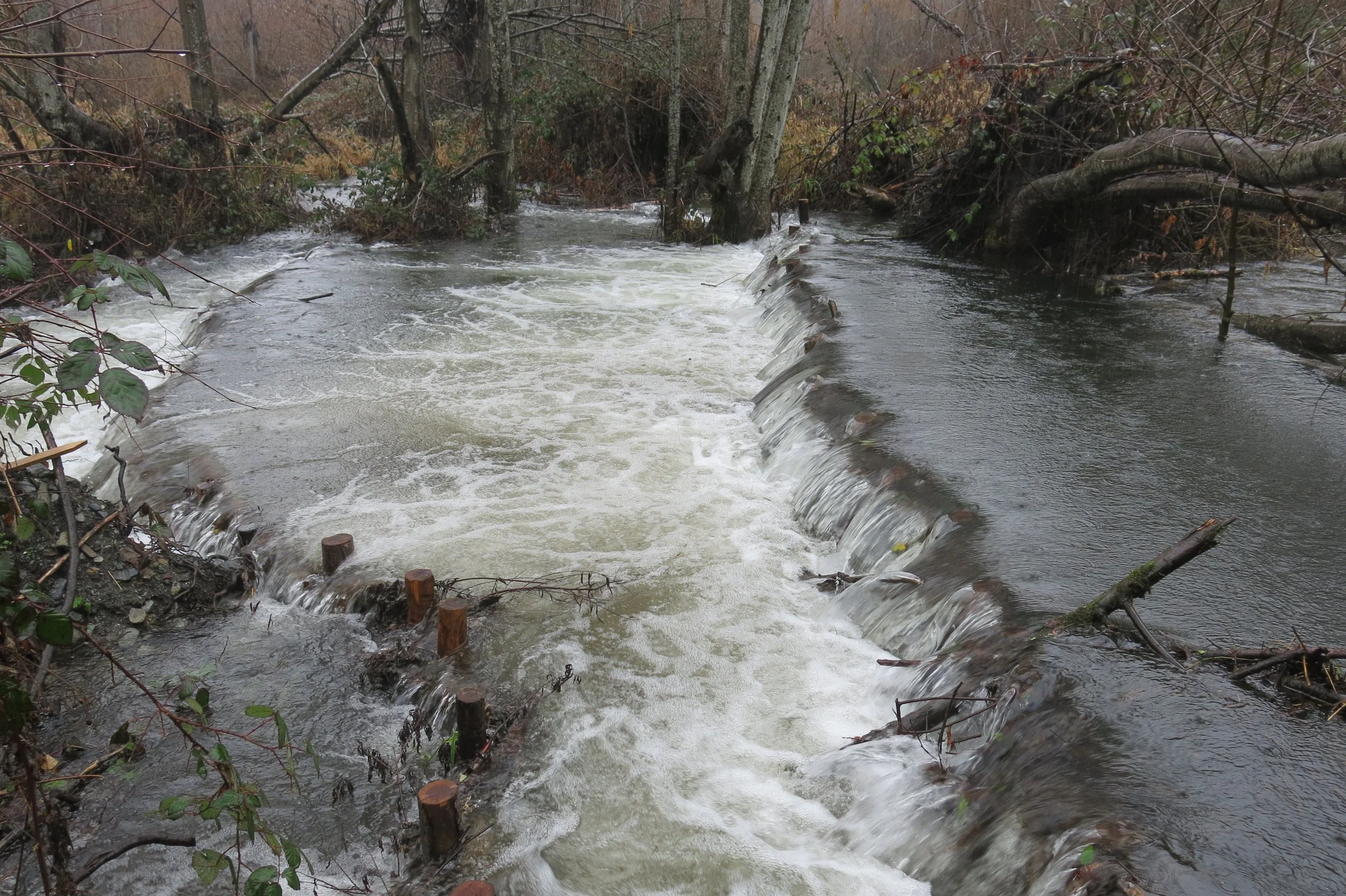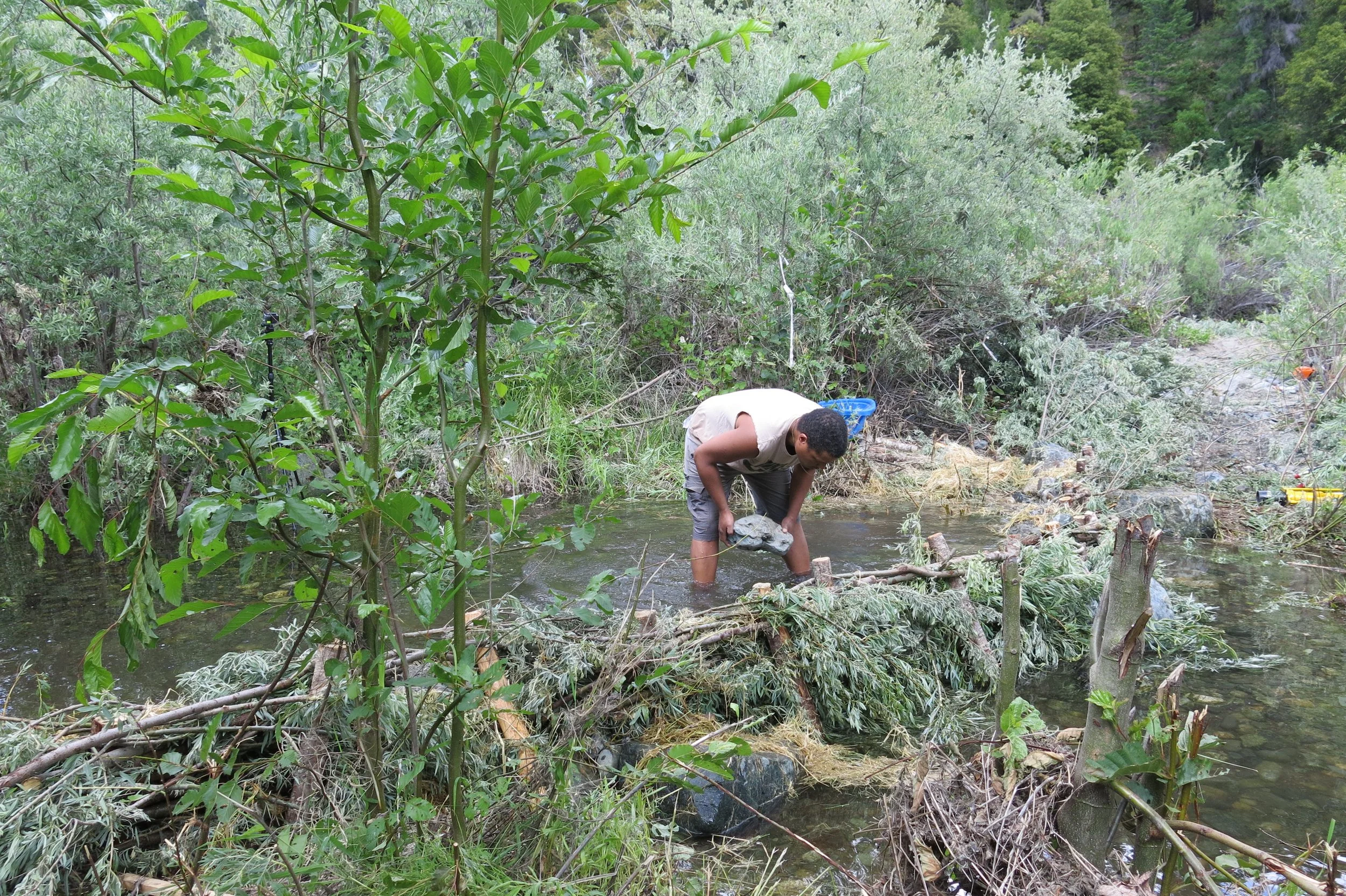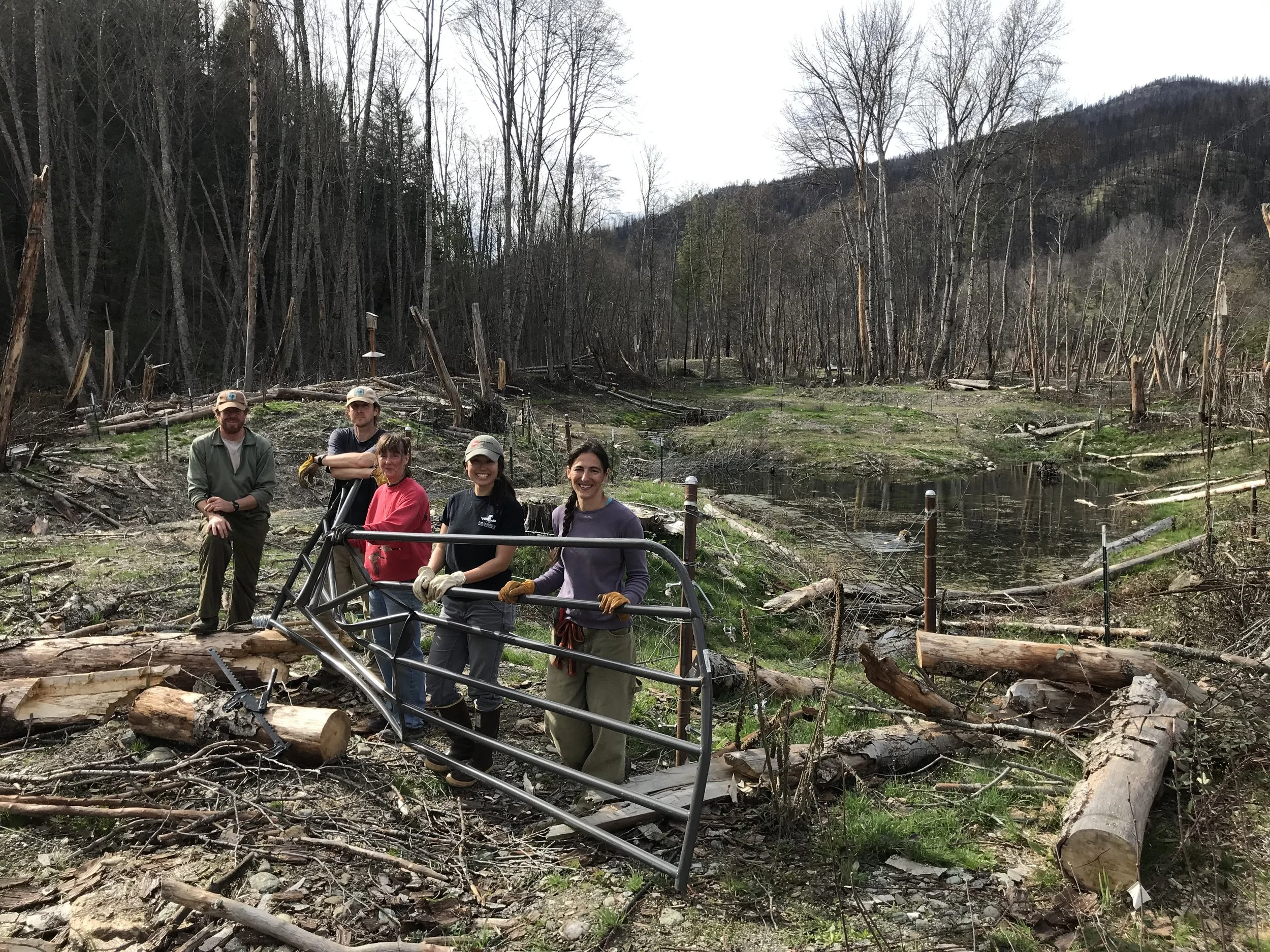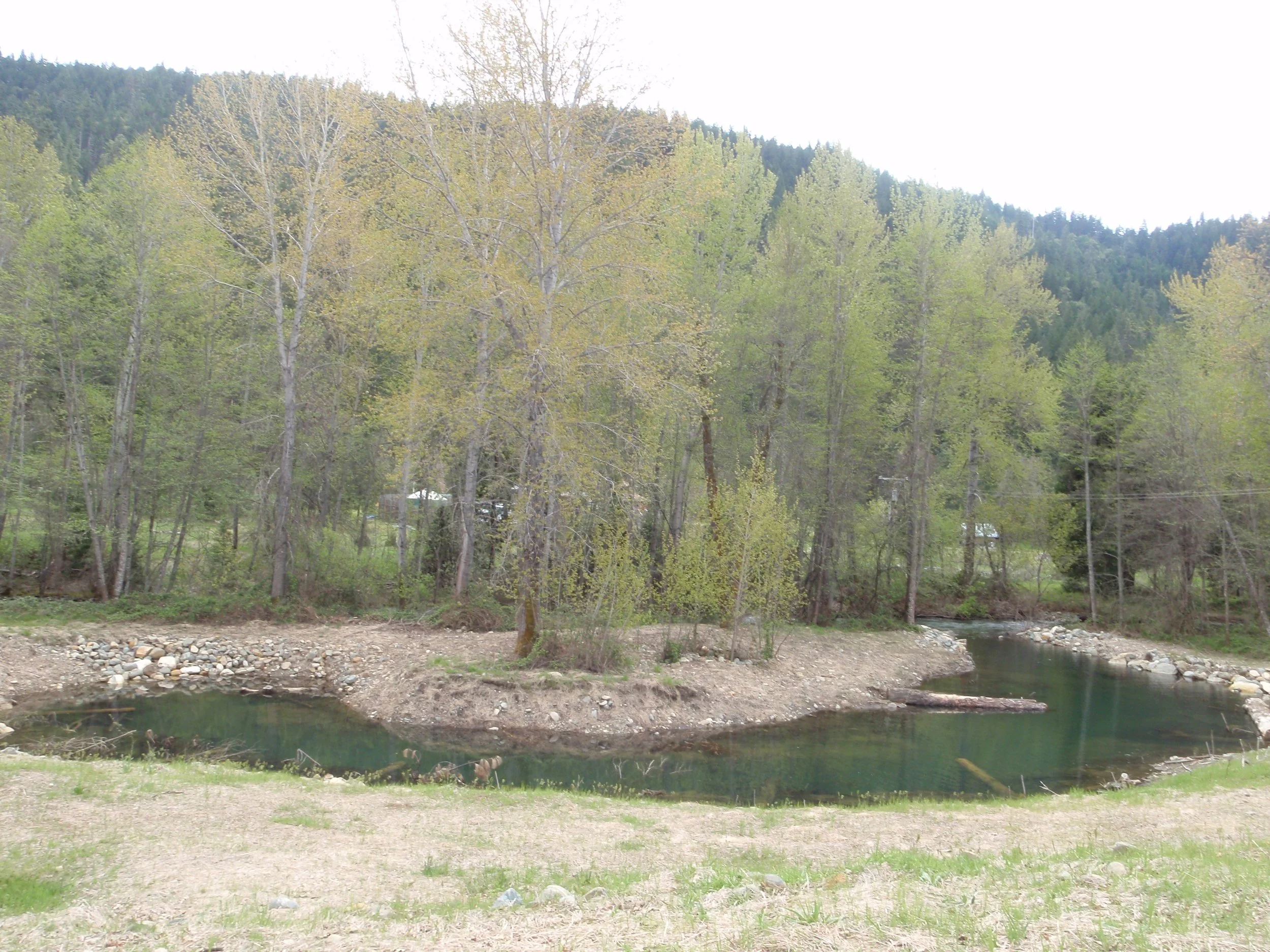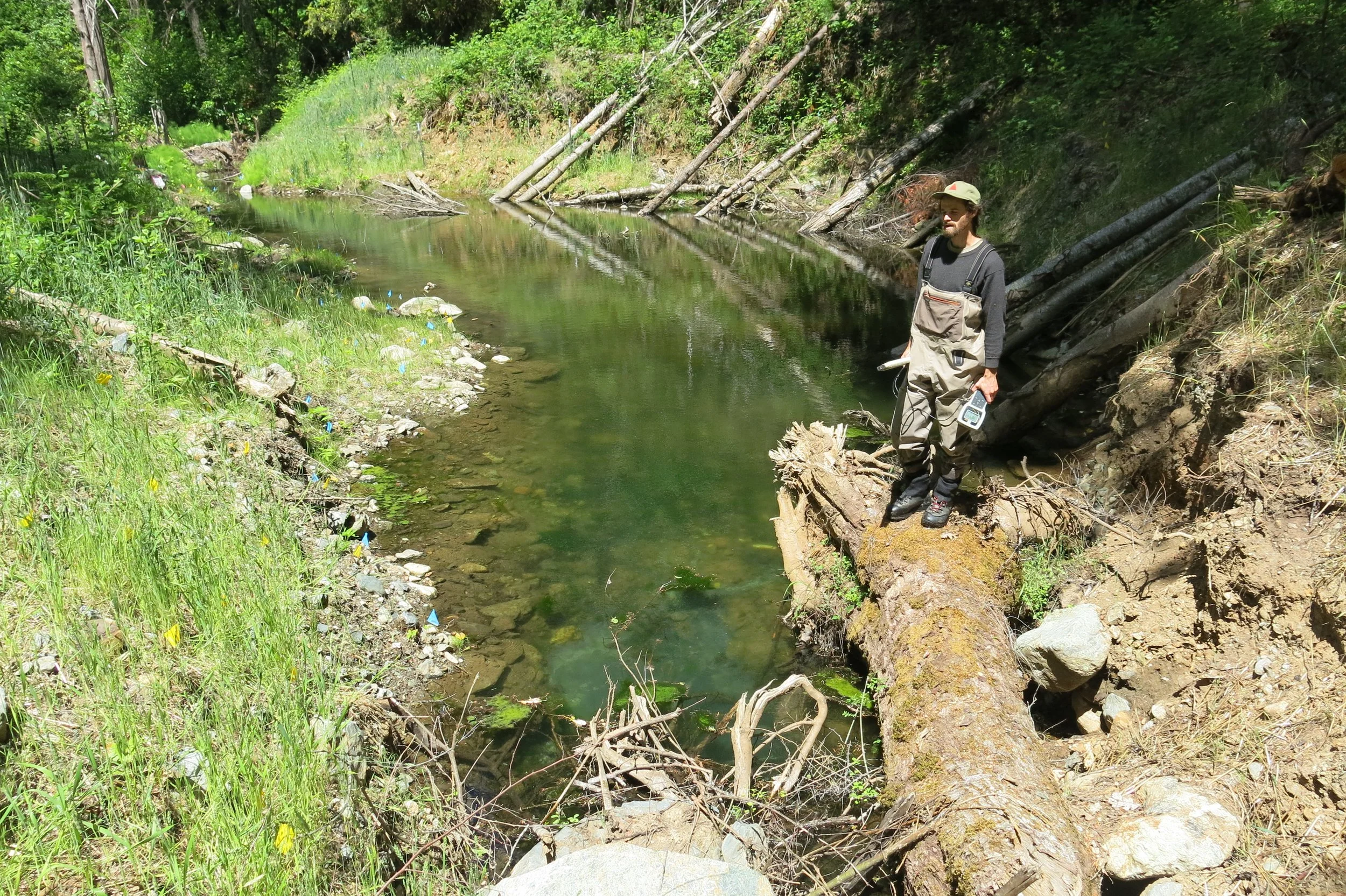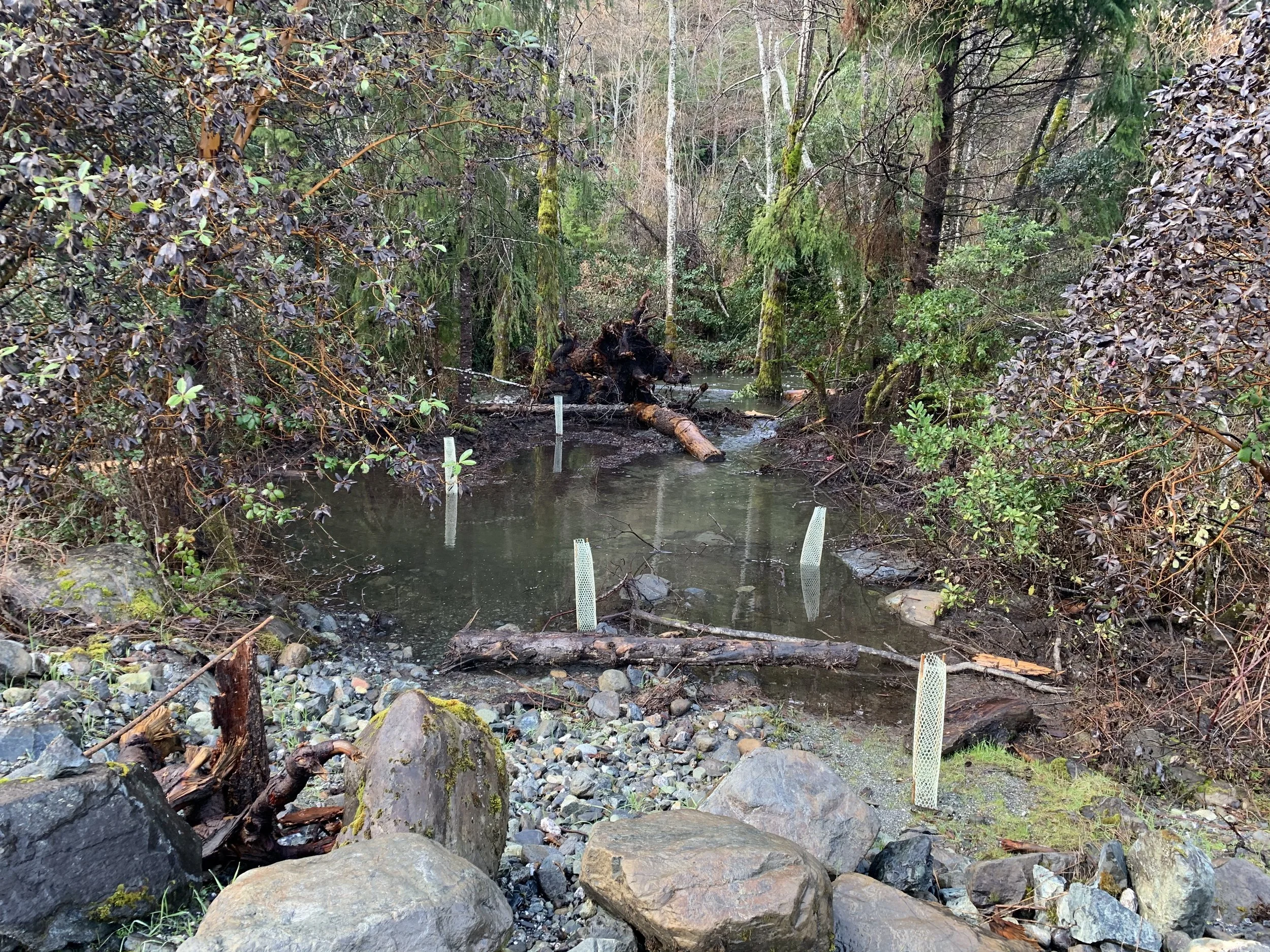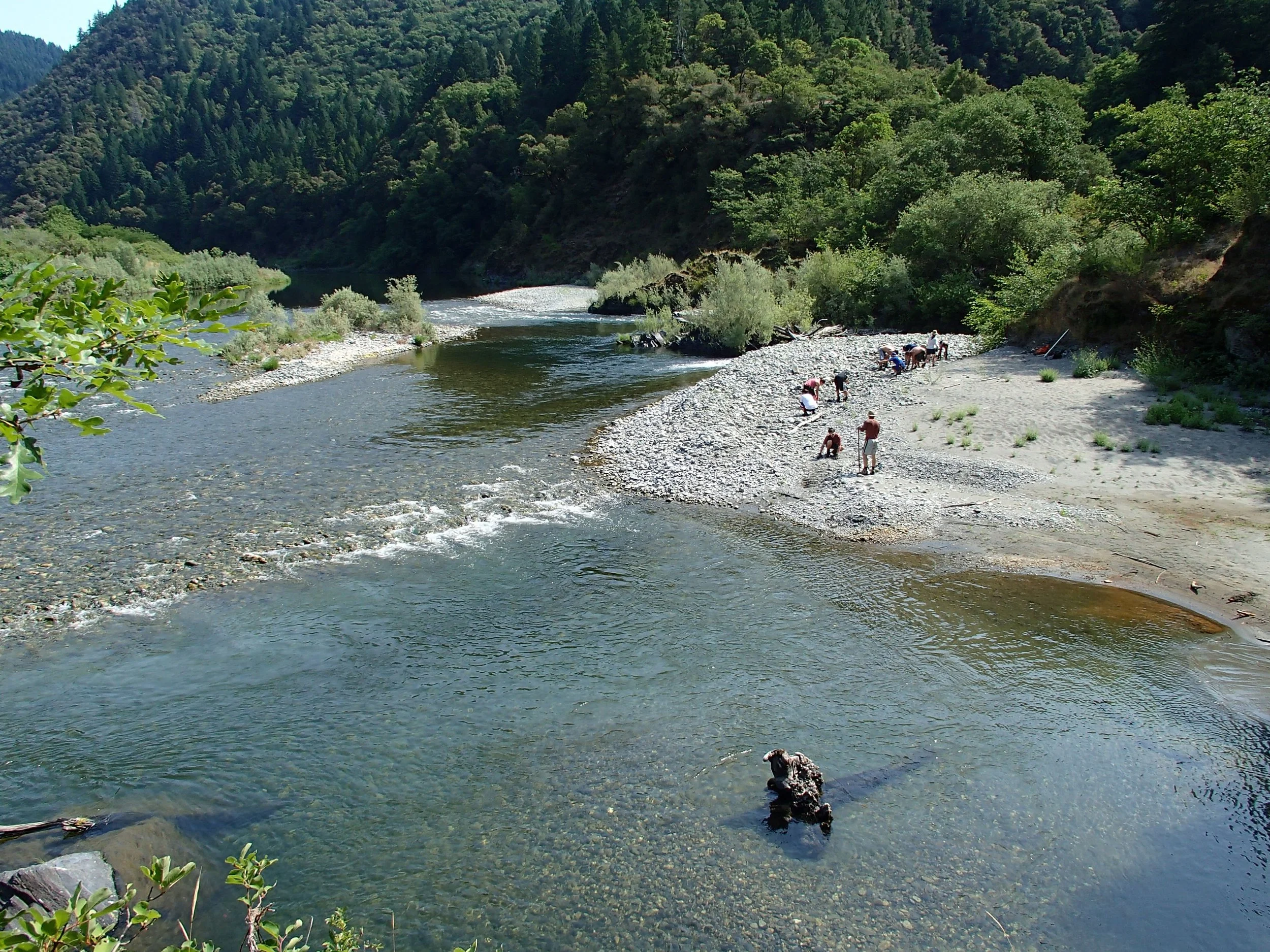
Beaver Dam Analogues
MKWC Fisheries try to mimic beavers by building Beaver Dam Analogues (BDAs) with the goal of creating summer and winter rearing habitat for salmonids, as well as connecting creeks to their floodplains.
Off-Channel Ponds
Off-channel ponds are crucial rearing habitat for the threatened coho salmon. Coho prefer slow, low-gradient streams and pools. Extensive flood control berms along lower Seiad Creek have disconnected this prime floodplain habitat. These ponds have one connection to the creek and act as a spring fed back eddy. These ponds do not divert any water from the creek, but use creek level groundwater flow to fill. Studies show that ponds may even increase the water table as winter flows get held in the ponds instead of swiftly flowing downstream. The ponds have been dug and the surrounding area has been seeded with grasses, and willows have been planted. We are seeing high numbers of juvenile coho in the off-channel ponds.
Channel Reconfiguration
MKWC Fisheries has had one large scale channel reconfiguration project, goal of project is multifaceted:
1) create flow diversity with side channels and alcoves,
2) engage the floodplain for a healthy riparian.
Seiad Creek Channel Reconfiguration: Before
Seiad Creek Channel Reconfiguration: After
Wood Loading
With the use of excavators and helicopters, MKWC adds large wood to streams to create pools, activate floodplains, create pockets of slow water for winter rearing, sort gravel for spawning, and provide cover for fish.
Spawner Surveys
MKWC participates in a multi-organizational effort to monitor how many adult Chinook and Coho salmon return to the Klamath Basin to spawn. These numbers are especially important since we are dealing with threatened species.
Fish Passage
Each year, MKWC completes manual fish passage work on tributaries to the Klamath River between the Trinity and Iron Gate. This work addresses fish passage problems by using hand tools to modify the creeks so that fish can access cold water. Additionally, MKWC Fisheries installs brush bundles to thermal refuge areas to provide cover for salmonids seeking cold water.



